
Ferdinand II, was a member of the Castilian cadet branch of the House of Ivrea and King of León and Galicia from 1157 until his death.

Henry II, called Henry of Trastámara or the Fratricidal, was the first King of Castile and León from the House of Trastámara. He became king in 1369 by defeating his half-brother Peter the Cruel, after numerous rebellions and battles. As king he was involved in the Fernandine Wars and the Hundred Years' War.
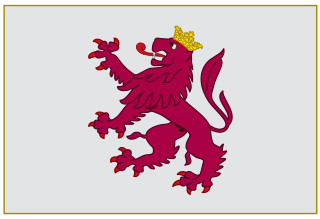
The Kingdom of León was an independent kingdom situated in the northwest region of the Iberian Peninsula. It was founded in 910 when the Christian princes of Asturias along the northern coast of the peninsula shifted their capital from Oviedo to the city of León. The kings of León fought civil wars, wars against neighbouring kingdoms, and campaigns to repel invasions by both the Moors and the Vikings, all in order to protect their kingdom's changing fortunes.

Andrade is a surname of Galician origin, which emerged in the 12th century as the family name of the knights and lords of the small parish of San Martiño de Andrade, in the municipality of Pontedeume. The first mention of this small territory is to be found in the documentation of the monastery of San Xoán de Caaveiro, and belong chronologically to the 9th century. It was part of the region of Pruzos, which was created as an administrative and ecclesiastical territory of Kingdom of Galicia in the sixth century by King Teodomiro through a document written in Latin called Parrochiale suevum, Parochiale suevorum or Theodomiri Divisio. From the 12th century Pruzos, and therefore Andrade, were integrated into the county of Trastámara that belonged to the lineage Traba, the most powerful Galician family. By this same time the family group: Fortúnez, begins to unite their names Andrade as surname, since in this parish their family home was located. The knights of Andrade were faithful vassals of their lords the Counts of Trastámara throughout the middle centuries of the Middle Ages.
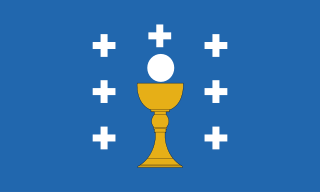
The Kingdom of Galicia was a political entity located in southwestern Europe, which at its territorial zenith occupied the entire northwest of the Iberian Peninsula. In the early 10th century, the Kingdom of Galicia was formed following the division of the Kingdom of Asturias after the death of Alfonso III in 910. His sons split the kingdom, with Ordoño II inheriting Galicia. While Galicia became a distinct political entity, it remained closely tied to the Leonese and Asturian realms through dynastic connections. Later, Ordoño II would integrate Galicia into the Kingdom of León when he inherited the latter. Though the Kingdom of Galicia had moments of semi-independence, it was typically seen as part of the Kingdom of León. Compostela became the capital of Galicia in the 11th century, while the independence of Portugal (1128) determined its southern boundary. The accession of Castilian King Ferdinand III to the Leonese kingdom in 1230 brought Galicia under the control of the Crown of Castile.

Castrodouro Castle is a small fortification in Alfoz, Galicia, Spain, who once belonged to Pardo de Cela's family. Of the primitive castle, only the keep is preserved.
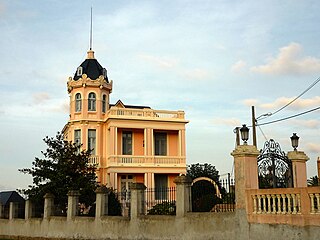
Barreiros is a municipality in the province of Lugo, in the autonomous community of Galicia, Spain. It belongs to the comarca of A Mariña Oriental. This municipality is closely linked to the history of the province from pre-Roman times. It has a geographical range extending from the valleys to the mountains and from the plains to the coast with high cliffs and long beaches.
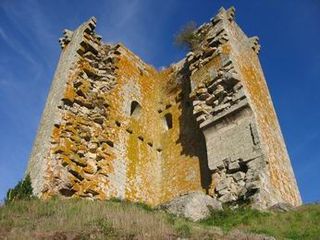
The Irmandiño revolts were two revolts that took place in the 15th-century Kingdom of Galicia against attempts by the regional nobility to maintain their rights over the peasantry and the bourgeoisie. The revolts were also part of the larger phenomenon of popular revolts in late medieval Europe caused by the general economic and demographic crises in Europe during the 14th and 15th centuries. Similar rebellions broke out in the Hispanic Kingdoms, including the War of the Remences in Catalonia and the foráneo revolts in the Balearic Islands.

Pedro Fróilaz de Traba was the most powerful secular magnate in the Kingdom of Galicia during the first quarter of the twelfth century. According to the Historia compostelana, he was "spirited ... warlike ... of great power ... a man who feared God and hated iniquity," for Diego Gelmírez himself had "fed him, like a spiritual son, with the nutriment of holy teaching." Brought up at the court of the Emperor Alfonso VI, Pedro raised the future Emperor Alfonso VII in his household. Around the latter he and Diego formed a "Galician party" that dominated that region during the turbulent reign of Urraca (1109–26). In September 1111 they even had the child Alfonso crowned king at Santiago de Compostela, but it was Pedro who was imperator in orbe Galletiae.

Rodrigo Vélaz was the "count of Galicia, who held Sarria" according to the near-contemporary Chronica Adefonsi imperatoris. During his long public career he was the dominant figure in mountainous eastern Galicia while the House of Traba dominated its western seaboard. He served under three monarchs—Alfonso VI, Urraca, and Alfonso VII—and was loyal to all of them, never figuring in any rebellion. The contemporary Historia compostellana is a valuable source for his life, since there are no aristocratic archives surviving in Spain from this period. Rodrigo's career must be pieced together from the few references in the chronicles and the charters preserved in various ecclesiastical archives.

Pedro Fernández de Castro, nicknamed el de la Guerra, was a powerful Galician noble and military figure of the House of Castro, descended by illegitimate lines from the kings of Castile-Leon-Galicia. Pedro Fernandez de Castro was Lord (Señor) of Lemos and Sarria and served as mayordomo mayor of Alfonso XI of Castile, adelantado de la frontera (governor) of Andalusia, Galicia and Murcia and pertiguero mayor of the lands of Santiago.

Sueiro Gomes de Soutomaior was an important aristocrat in the kingdom of Galicia during the 15th century, heir to a lineage dating back at least to his great-grandmother, the great admiral and Galician earl Pai Gomes Charinho. He lived a hard time with serious tensions between nobles and peasants, was lord of Lantañón, Rianxo, Insua and Vea, bearing the title of marshal.

Alfonso Enríquez, also known as Alonso Enríquez was Lord of Medina de Rioseco and Admiral of Castile.
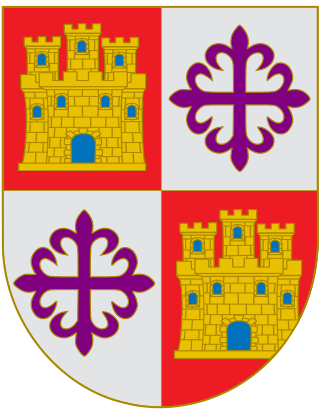
Enrique Enríquez the Younger was a nobleman of Castile, son of Enrique Enríquez the Elder. He was lord of Villalba de los Barros, Nogales, Almendral, La Parra, Begíjar and other towns. He was Adelantado Mayor of the border of Andalusia, chief justice of the King's House, Chief of the forces of the bishopric and Kingdom of Jaén, Mayor of Seville and Knight of the Band.
Diego Fernández de Córdoba y Mendoza, 3rd Count of Cabra, was a Castilian nobleman. He served with distinction during the war in which the Emirate of Granada was conquered by the forces of Castile and Aragon, and subsequently had great influence in Castile.

Pedro Fernández de Córdoba y Pacheco, first Marquess of Priego, was a Castilian nobleman. He became one of the most powerful men in Andalusia, but after the death of Queen Isabella I of Castile (1451–1504), he supported her daughter Joanna of Castile (1479–1555) against King Ferdinand II of Aragon (1452–1516), who was regent of Castile. After serious disturbances in Córdoba in 1508 he was forced to throw himself on the king's mercy, and was arrested and exiled. Later he was pardoned and allowed to return.
Rodrigo Gómez de Traba, also called Ruy Gómez de Trastámara, was a Galician nobleman of the House of Traba.
Violante Sánchez of Castile, was a Castilian noblewoman and by marriage Lady of Lemos, Sarria, Cabrera and Ribera.
Cela is a Spanish-Galician surname. Notable people with the surname include:















